
MANBIJ, Syria – I arrived in Syria nearly two weeks ago to cover the ongoing civil war in the north, including the fight against Islamic State by the Kurdish-led Syrian Democratic Forces, as well as the Turkish attack on the region of Efrin in the northwest.
To go to northern Syria from Iraq, you first need permission from the Kurdish authorities in Iraqi Kurdistan, explaining your travel plan. Once you get permission, you cross the river at the Semalka (Fishkhabur) border crossing and enter northern Syria. I was already told by the People’s Protection Units (YPG) beforehand that it was not possible for foreign journalists to go to Efrin since one would have to pass through a road controlled by the Syrian government.
At that time it seemed that the only way to get into Efrin was through Syrian government territory and to apply for a Syrian visa, which is what The Independent’s journalist Robert Fisk did when he went to Efrin in January.
Camels on road to #Raqqa pic.twitter.com/8AtnDo5rOE
— Wladimir (@vvanwilgenburg) March 1, 2018
Therefore, my plan was to visit Manbij, Hasakah, Raqqa and parts of Deir Ezzor province currently under SDF control; do some interviews with senior Kurdish officials in Qamishli and maybe Kobani on the situation in Efrin; and to visit the newly-created U.S.-backed border force. However, it quickly seemed to be more difficult than I had expected.
After I got permission from the media council of the local administration of the Cizere canton in the small town of Amude, I attempted to find the training base of the 30,000-strong Syrian border security force near Hasakah with a driver who visited the base before.
Banner in support of Afrin in Amude pic.twitter.com/0hfIn0Gv4C
— Wladimir (@vvanwilgenburg) February 25, 2018
However, when I got there it seemed the training was already finished. By the time I returned to the SDF headquarters after visiting a training base for conscripts, no senior SDF leaders had time for interviews.
Later, Kino Gabriel, the SDF spokesperson and a fluent English speaker, told me there was not really a border force.
“There was no border force because we already have the SDF. We have groups and thousands of fighters on the border of Turkey, Iraq, and the regime in order to secure those borders,” he said when we spoke at the SDF base.
“What was announced was already part of the existing program,” he said. “There was no special group created – it was already there doing its job,” he added. “I think it was used by Turkey as an excuse to attack on Afrin,” he said, adding that the SDF has the legal right to defend its de facto borders.
.@KinoGabriel1 says US and Europe should not believe Turkish claims and continue to support their true allies that they have worked together years in fight against ISIS pic.twitter.com/9jl2qCwG8y
— Wladimir (@vvanwilgenburg) February 27, 2018
A few days later, when I visited the SDF base in Hasakah again to get permission from the SDF to go to Deir Ezzor, it also seemed to be difficult.
The SDF media official told me that day there would be no access in Deir Ezzor. A fixer said that there were still ongoing clashes between ISIS and the SDF near the oil field there. Deir Ezzor is still a volatile area where ISIS sleeper cells launch ongoing attacks on SDF positions and there are ongoing tensions between the SDF and the Syrian government over oil fields.
Leftover from fighting two years ago Kurds & Syrian govt in hasakah pic.twitter.com/nlZmYQQqKd
— Wladimir (@vvanwilgenburg) February 27, 2018
Now with Turkey also attacking Efrin, the SDF have to fight off both Turkey and ISIS while only receiving support from the international coalition for the fight against ISIS in Deir Ezzor, which is only calling on Turkey not to “distract from the fight against ISIS.”
Therefore, I decided instead to go to Kobani, which has a different administration from the one based in Amude, and got permission from local authorities in Amude to travel there. They have their own media councils as part of the decentralized system.
I was told that I could go to Manbij to visit the frontline without any problems. For Raqqa, however, I needed a permission from the SDF in Ain al Issa. Later, when I visited a prominent family in Kobani, I discovered there was a possibility I could now go to Efrin, although the road was dangerous. Turkey had already bombed a civilian convoy heading there from Manbij. But by this time I no longer had the time to go to Efrin since I had to return to the Kurdistan Region and my plan was only to stay for two weeks.
I chose Manbij, hoping for an interview with the Manbij Military Council leaders and to visit the frontline. However, when I arrived there they said I could interview an MMC leader and people in Manbij, but I had to come back later to go to the frontline, since they needed to be informed at least one day in advance.
Again I waited, and went back the next day to visit the Manbij frontline. Earlier, a Western journalist told me that Manbij “was one of the most boring frontlines I have ever seen,” so I wasn’t sure if I needed a bulletproof vest, or if I should bring my armor and helmet.
When on Wednesday I finally visited the Manbij frontline, it seemed calm. Some Arab fighters from the MMC were casually sitting on the berm, where they easily could have been shot by Turkey-backed Free Syrian Army rebels from the Sajur border. They said sometimes rebels shot at them, and there are some planes spying on their positions.
Manbij frontline near Sajur pic.twitter.com/gpqNHgsGOI
— Wladimir (@vvanwilgenburg) February 28, 2018
I was told I could take pictures and videos of the Turkish side, but not to make any videos of the MMC position in order to not reveal their location to the enemy force.
Almost as soon as I started to film, a sniper fired warning shots – or maybe they were aimed at us. Thus, it was foolish not to bring any helmet or vest.
Sniper or a normal fighter shot a few bullets over our heads from this village at Sajur front. pic.twitter.com/7i3XkAIN2W
— Wladimir (@vvanwilgenburg) March 1, 2018
The commander immediately picked up a heavy machine gun and fired back at the rebels.
“Seems you got some action,” the commander said.
Now, as my trip is at its end, I realize it was not so easy to plan.
Road to Raqqa, Aleppo and Tal Abyad pic.twitter.com/dfpE3GJA4T
— Wladimir (@vvanwilgenburg) February 27, 2018



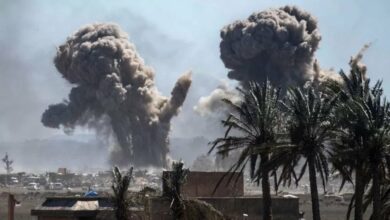

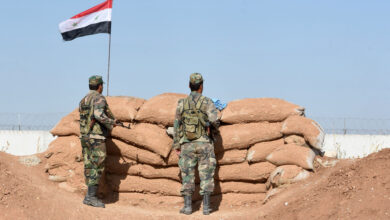
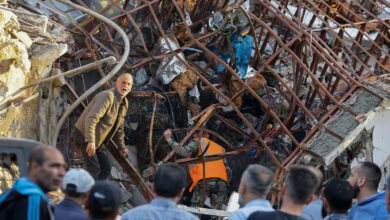

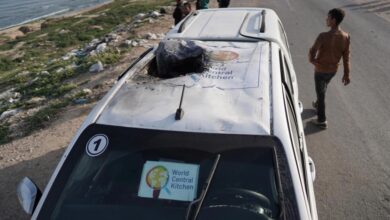
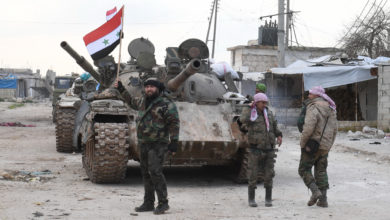

7 Comments